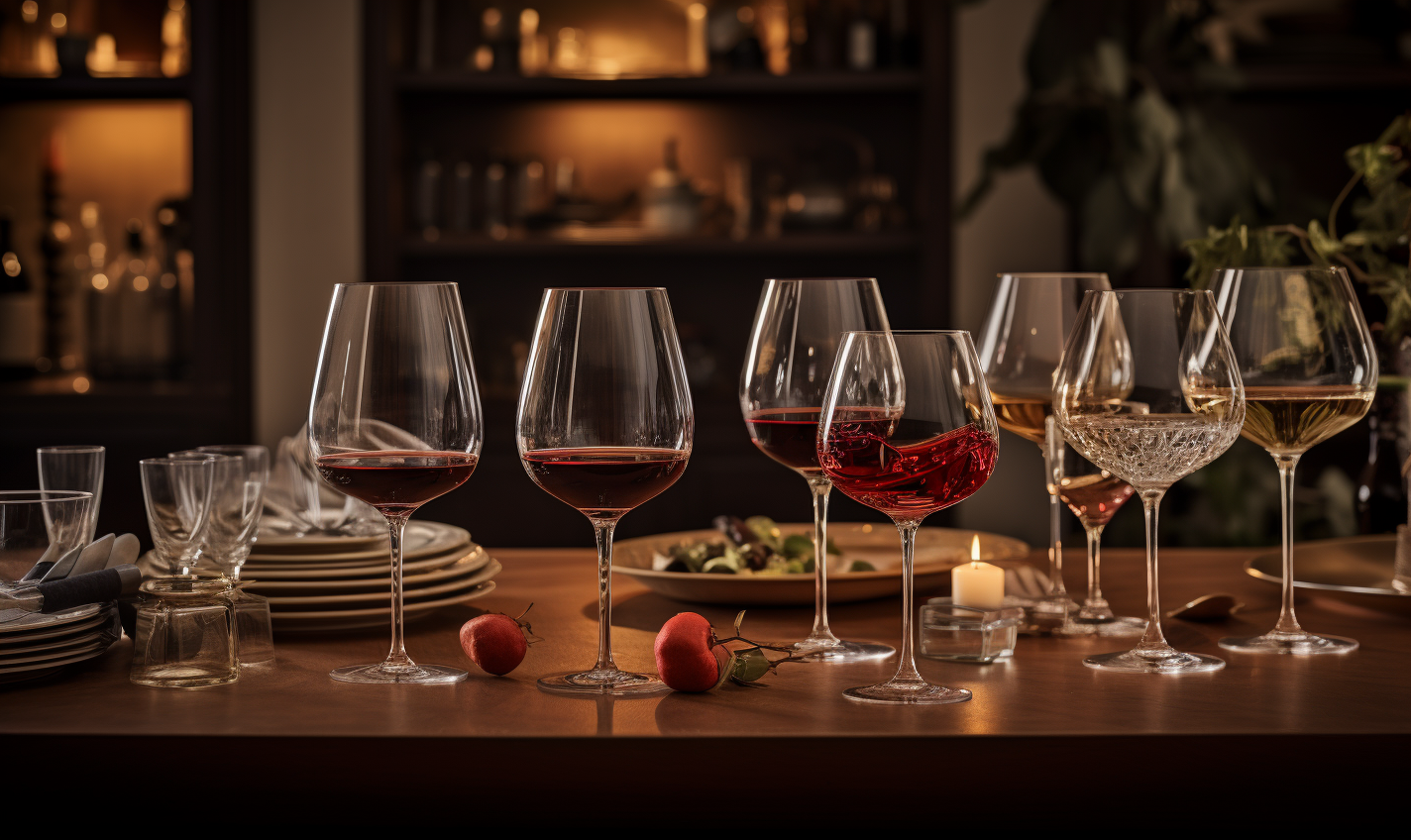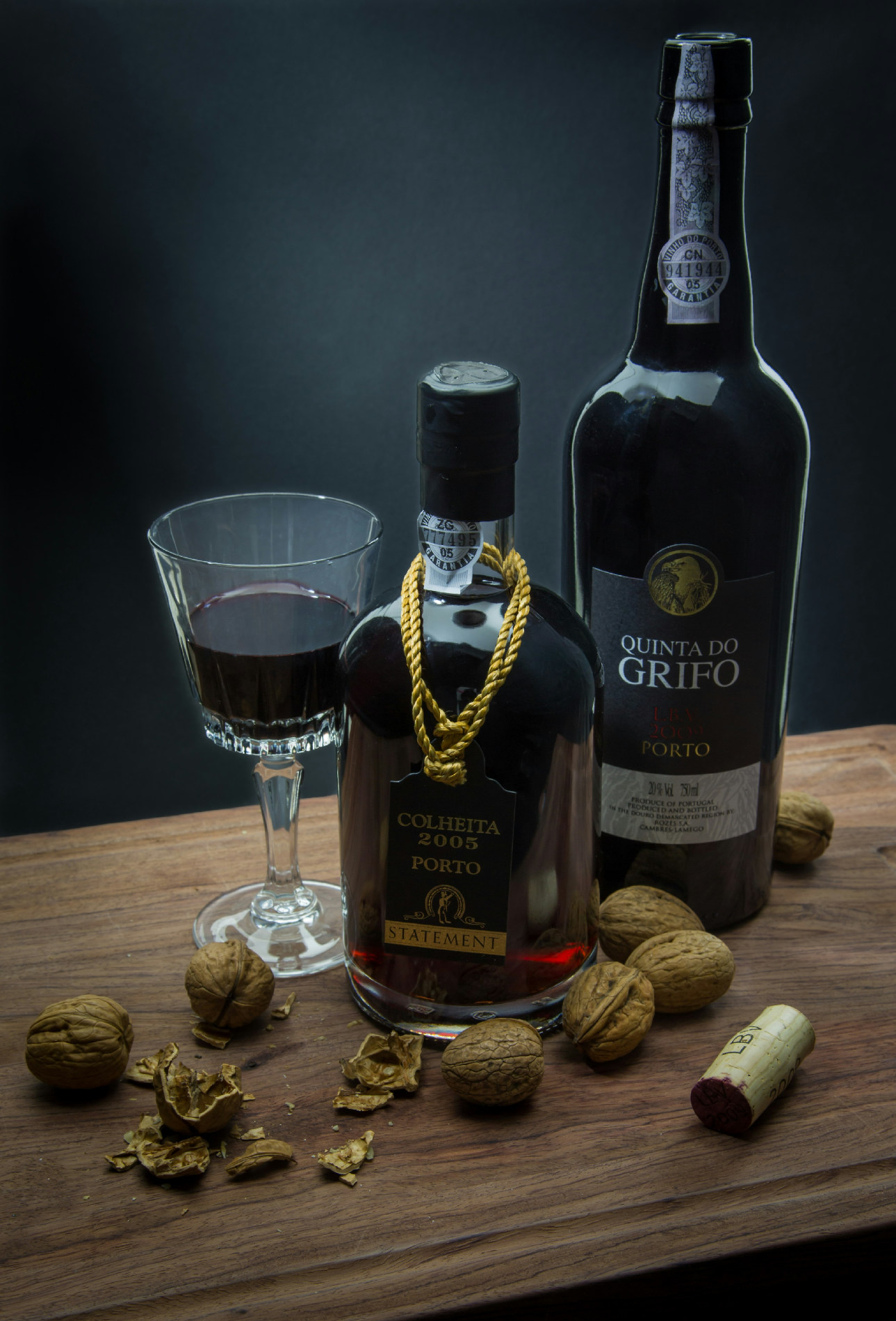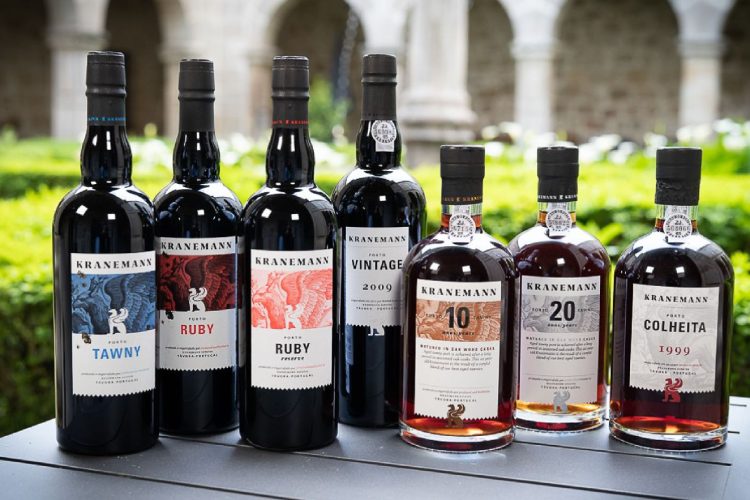Welcome to our guide on how to serve Porto wine, tailored for those who appreciate the finer things in life and seek a sense of belonging in the world of wine connoisseurship. This professional-style introduction will explore the essential steps to enhance your Porto wine experience. From selecting the perfect temperature and glassware to understanding the art of decanting for optimal aeration, we will provide you with the knowledge to unlock the full potential of this extraordinary beverage. Additionally, we will delve into the art of pairing Porto wine with delectable food options and offering insights on storing Porto wine to ensure its longevity. Get ready to embark on a journey of taste and refinement.
Key Learnings
- Serve Porto wine slightly chilled, around 16-18 degrees Celsius (60-64 degrees Fahrenheit), to enhance its flavors and aromas.
- Use tulip-shaped glasses with a narrow rim and wide bowl, stemmed glasses, and smaller-sized glasses to concentrate aromas, prevent warming, and minimize oxidation.
- Decant Porto wine softens tannins, integrates flavors, and improves aromas and taste profiles before serving.
- Pair Porto wine with foods like aged Gouda, creamy blue cheese, seafood dishes, chocolate desserts, dark chocolate, nutty treats, roasted meats, or game for optimal taste combinations.
Choosing the Right Temperature
When serving Porto wine, serving it at the appropriate temperature is essential. Regulating the serving temperature is crucial as it directly impacts the flavor profile of this exquisite wine. With its rich and complex flavors, Porto wine deserves to be enjoyed at its fullest potential. The temperature at which it is served can either enhance or diminish its unique characteristics. The flavors may become muted if served too cold, and the wine may lose its depth and complexity.
On the other hand, serving it too warm can result in an overly alcoholic taste and a lack of balance. To truly appreciate the nuances of Porto wine, it is recommended to serve it slightly chilled, at around 16-18 degrees Celsius (60-64 degrees Fahrenheit), allowing the wine to display its full range of flavors and aromas.
Selecting the Ideal Glassware
To ensure an optimal tasting experience, selecting the appropriate glassware for serving Porto wine is essential. The right glass can enhance the wine’s aromas and flavors, allowing you to appreciate its complexities fully.

When choosing glassware for Porto wine, consider the following options:
- Tulip-shaped glasses: These glasses have a narrow rim and a wide bowl, which helps concentrate the wine’s aromas and directs them towards your nose.
- Stemmed glasses: Opt for glasses with stems, as they allow you to hold the glass without warming the wine with your hands.
- Small-sized glasses: Porto wine is typically served in smaller quantities compared to other wines. Choose glasses that are smaller in size to ensure the wine doesn’t oxidize before you finish it.
- Crystal glasses: Crystal glassware is often preferred for serving Porto wine due to its exceptional clarity and ability to enhance the wine’s appearance.
Decanting for Optimal Aeration
Decanting the wine before serving is recommended to achieve optimal aeration and enhance Porto wine flavors. Decanting involves carefully transferring the wine from its bottle into a decanter, allowing it to breathe and release its full potential. This process is particularly important for aged Porto wines, as it helps to soften any harsh tannins and integrate the complex flavors.

While the traditional method of decanting involves slowly pouring the wine into a decanter to separate it from any sediment, alternative decanting methods are available. These include using a wine funnel or aerator to accelerate the aeration process. The benefits of decanting aged Porto are twofold: it improves the wine’s aromas and taste profile while also removing any unwanted sediment that may have formed over time. By decanting, you can truly appreciate the nuances and depth of flavor in your aged Porto wine.
Pairing Porto Wine With Food
Porto wine can be expertly paired with a variety of foods to enhance the overall dining experience. Here are four tantalizing ways to pair port wine with food:
- Port Wine and Cheese: The rich and complex flavors of port wine make it a perfect companion for a wide range of cheeses. Try pairing a tawny port with aged Gouda or a vintage port with creamy blue cheese for a mouth-watering combination of flavors.
- Exploring Different Porto Wine Varieties: Porto wine comes in a variety of styles, from dry white to rich red. Experiment with pairing a dry white port with seafood dishes or a ruby port with chocolate desserts for a delightful culinary adventure.
- Decadent Desserts: The sweetness and depth of port wine make it an excellent choice for pairing with desserts. Indulge in the classic combination of port wine and dark chocolate or try a late bottled vintage port with a rich, nutty dessert for a truly luxurious experience.
- Savory Delights: Don’t limit port wine to just desserts. Its bold flavors can also complement savory dishes such as roasted meats or game. Pair a vintage port with a hearty beef stew or a tawny port with a plate of charcuterie for a savory delight.

Storing Porto Wine for Longevity
When storing Porto wine for longevity, it is important to follow proper guidelines to ensure its preservation and optimal taste over time. Properly aging Porto wine requires attention to detail and adherence to specific conditions. Firstly, it is essential to store the bottles in a cool, dark place, away from direct sunlight and fluctuations in temperature. This helps to prevent oxidation and maintain the wine’s flavors. Secondly, it is recommended to lay the bottles horizontally to keep the cork moist and prevent it from drying out. It is also advisable to store the wine in a vibration-free environment to avoid disturbing the sediment.
Lastly, maintaining a consistent humidity level of around 70% is crucial for preserving flavors and preventing the cork from shrinking. By following these guidelines, one can ensure that their Porto wine ages gracefully, allowing them to enjoy the rich and complex flavors that develop over time.
Porto Wine Can Age For Several Decades
Finally, serving Porto wine requires careful consideration of temperature, glassware, decanting, and food pairing. These factors can greatly enhance this exquisite beverage’s overall experience and enjoyment. Additionally, proper storage is essential for preserving the quality and longevity of Porto wine. It is fascinating to note that Porto wine can age for several decades, with some vintages reaching their peak after 40 or more years. This remarkable longevity evokes a sense of awe and appreciation for the craftsmanship and complexity of this beloved wine.
Enhance your wine knowledge and savor the elegance of viniculture with ‘Sip, Savor, Celebrate: Encyclopedia Wines, a Taste of Genius’ at EncyclopediaWines.com. Immerse yourself in the world of wines where every sip is a story of passion and precision
Frequently Asked Questions
How Is Porto Wine Made?
Porto wine is made through a meticulous production process involving grapes fermentation, fortification with grape spirit, and aging in wooden barrels. Traditional methods are still used, but modern techniques have also been introduced to enhance efficiency and quality.
What Is the Difference Between a Vintage and a Non-Vintage Porto Wine?
A vintage Porto wine is made from grapes harvested in a single year and undergoes a longer aging process, resulting in a full-bodied and complex flavor. Non-vintage Porto wines are a blend of different years, offering a consistent and approachable taste profile. The difference between tawny and ruby porto lies in the aging process, with tawny porto being aged in barrels, resulting in a nutty and caramelized flavor, while ruby porto is aged in bottles, preserving its vibrant fruitiness.
How Long Does Porto Wine Need to Be Decanted For?
Decanting techniques are crucial for enhancing the flavors and aromas of Porto wine. To achieve optimal results, it is recommended to decant Porto wine for at least 2-3 hours. Serve in a tulip-shaped glass to fully appreciate its complex characteristics.
Can Porto Wine Be Served Chilled?
Porto wine can indeed be served chilled, as it enhances its refreshing qualities. However, it is important to note that the ideal serving temperature for Porto wine is typically between 16-18°C. The flavors are elevated when paired with decadent desserts or aged cheeses to create a harmonious tasting experience.
What Are Some Common Misconceptions About Porto Wine?
Porto wine is often misunderstood regarding its health benefits and aging process. While some may believe it has significant health benefits, it should be enjoyed in moderation. Additionally, the aging process of Porto wine is a complex and meticulous one, requiring careful attention to detail.







